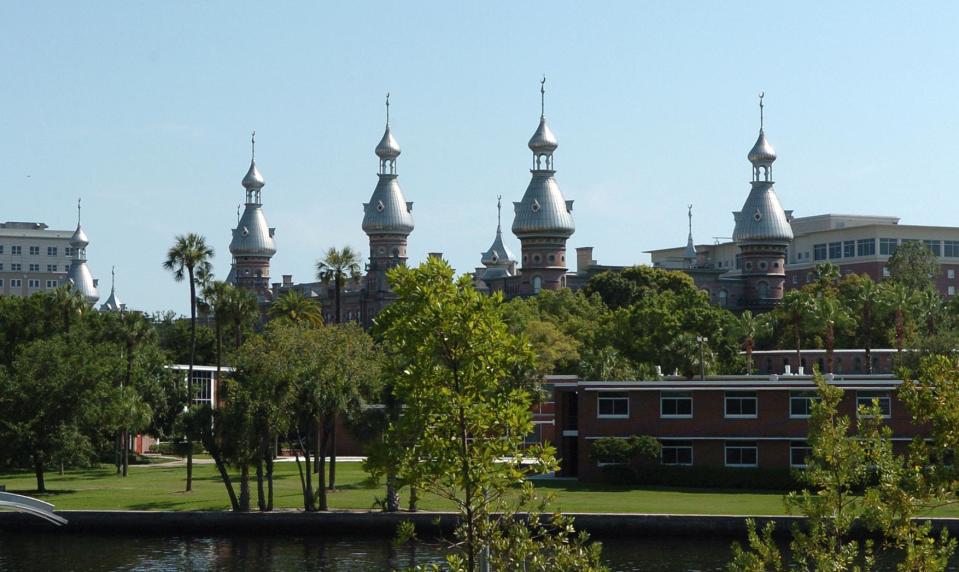Florida history: The University of Tampa and legacy of Henry B. Plant
- Oops!Something went wrong.Please try again later.
In an April 2019 column, we told you about Henry Bradley Plant, who was to the Tampa Bay area what Henry Flagler was to Florida’s east coast. His showcase was his Tampa Bay Hotel, now the University of Tampa.
Its Moorish-style, minaret-topped spires rise from the downtown skyline like a mirage. The private school, with about 9,600 students, is also a national historic landmark.
The hotel was the exotic vision of Plant, who, like Flagler, was encouraged by the state to bring his railroad down the peninsula from Jacksonville. While Flagler moved down the east coast, Plant angled across to the Tampa Bay frontier.

Fantasy Land for a Gilded Age: Henry Bradley Plant’s Tampa Bay Hotel
Lost ballparks: Plant Field and the roots of spring training in Tampa
Best Museums in Tampa: Explore Tampa’s culture and heritage at 10 world-class museums
He built his hotel for $2 million — about $57 million in today’s dollars — plus another $1 million in furnishings to build an iconic hotel that would exploit America’s then-fascination with “Moorish revival” architecture.
He topped each of the 13 minarets, cupolas and domes with a crescent moon. His wife traveled the world and spent another $1 million on furnishings that filled 80 boxcars.

A Tampa landmark
It opened in April 1891. The grounds included a golf course, race tracks, tennis courts and sidings for six private railroad cars at a time. A casino built across from the hotel was used for various events until it burned down in 1941.
After Plant died in 1899, the hotel went through several managers before Plant’s family sold it to the city in 1905 for $125,000. It became a center for weddings, balls and other events.
When baseball spring training came to Florida, the hotel housed the Chicago Cubs. Babe Ruth lounged in its lavish rooms; he signed his first baseball contract in its grand dining room and hit what was believed to be his longest home run in a spring training game at a diamond on the hotel grounds.
Centerpiece of the University of Tampa
The collapse of Florida’s real estate boom gave Florida a head start on the Depression. In 1931, a group of businessmen and community leaders put together a private college to fill a higher-learning vacuum in the area and to try to keep local youngsters at home. Two years later, when it outgrew Plant High School, the city leased out the former resort for $1 a year.
The historic centerpiece of the university, which hosts about 50,000 visitors a year, is its main academic building, Plant Hall. An adjacent ballroom has floor-to-ceiling windows. Administrative offices lining the 900-foot main hallway still contain finely-carved fireplaces. Plant Hall’s south wing houses the Henry B. Plant Museum, featuring furniture and fine art from the original resort.
The school has one piece of history we haven’t mentioned. We’ll explain next week. Here’s a hint: “Rough Riders.”
Florida Time is a weekly column about Florida history by Eliot Kleinberg, a former staff writer for three decades at The Palm Beach Post in West Palm Beach, and the author of 10 books about Florida (www.ekfla.com).
This article originally appeared on Palm Beach Post: Henry Plant was to Tampa what Henry Flagler was to state’s east coast
